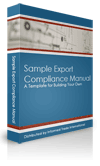The Stakes of Export Noncompliance
As a result of the current economic climate, U.S. exports are increasingly on the rise—so, too, are the potential penalties that may be levied against violators of the U.S. export laws and regulations. Not only have the various U.S. government agencies responsible for administering U.S. export controls committed themselves to a renewed increase in their export enforcement activities, but the “stick” that they wield in punishing violators also continues to grow in size and severity. There has never been a more opportune time for U.S. companies to assess the effectiveness of their own internal export management systems to ensure that all compliance policies and procedures are being consistently followed by company personnel.
With respect to the penalties that may be imposed by the Commerce Department’s Bureau of Industry and Security (BIS) for violations of the Export Administration Regulations (EAR), it is important to recognize that the underlying statutory authority of the EAR (the Export Administration Act) expired in 2001. Since that time, various Executive Orders issued under the International Emergency Economic Powers Act (IEEPA) have kept the EAR in force. Therefore, the current civil and criminal penalties imposed for violations of the EAR are those provided in IEEPA.
In the past few years, the IEEPA penalty regime has undergone a significant evolution. Prior to March 2006, civil and criminal fines for violations of the Export Administration Regulations (EAR) were set at a maximum of $11,000 per violation and/or up to 10 years’ imprisonment. On March 9, 2006, the President signed the USA Patriot Act Improvement and Reauthorization Act of 2005 into law, which increased civil and criminal penalties to $50,000 per violation and up to 20 years’ imprisonment. Most recently, on October 16, 2007, President Bush signed the IEEPA Enhancement Act (P.L. 110-96), which amended Section 206 of the IEEPA by dramatically increasing the civil and criminal penalties. The new penalties apply to violations under the EAR, including the Antiboycott Regulations. They are also applied to most of the economic sanctions programs administered by the Treasury Department’s Office of Foreign Assets Control. Under the IEEPA Enhancement Act –
- Civil fines were increased to $250,000 per violation or twice the amount of the underlying transaction; and,
- Criminal penalties were increased to a maximum of $1,000,000 per violation and/or 20 years’ imprisonment.
The increased civil penalties under the IEEPA Enhancement Act have retroactive effect. The new civil penalties apply to violations where an enforcement action is pending or commenced on or after the date of enactment—even though the underlying violation may have occurred prior to that time. The new criminal penalties apply only in enforcement actions commenced after the date of enactment
Other government agencies are following suit. In February 2005, the Census Bureau published in the Federal Register its Notice of Proposed Rulemaking (NPRM), which put forth a number of significant changes to the FTSR, including the renaming of the regulations as the “Foreign Trade Regulations.” Most importantly, the NPRM proposes to significantly increase the penalty provisions associated with the filing of Shipper’s Export Declarations (SEDs). The NPRM’s penalty provisions would increase civil penalties for violations of the Foreign Trade Regulations from $1,000 to a maximum of $10,000 per violation, as well as increase criminal penalties to a maximum $10,000 and/or five years imprisonment per violation. The NPRM has been the subject of serious discussions between the Census Bureau and U.S. Customs and Border Protection since it was issued in 2005; however, it is anticipated that the NPRM will be finalized and will become effective within the next few months.
The Penalties that may be assessed by the State Department’s Directorate of Defense Trade Controls (DDTC) remain unchanged, yet equally severe. For example, penalties for violations of the ITAR include:
- Criminal fines of a maximum of $1,000,000 per violation;
- Imprisonment of up to ten years; and,
- Civil penalties of up to $500,000 per violation.
Notwithstanding the foregoing, export violations may also be subject to increased or additional sanctions imposed under other federal statutes, and additional non-monetary sanctions may assessed as well, such as the denial or suspension of export privileges.
In view of the potentially severe consequences of export noncompliance, it behooves U.S. companies to closely examine their current export compliance policies and procedures. The existence of an effective internal compliance program will not only aid companies in preventing export violations, but will also enable them to identify potential problems and take the necessary remedial action. In addition, internal compliance programs may also serve as a partial shield when violations do occur. That is, properly implemented export compliance programs (or, export management systems as they have also been termed) may be considered a mitigating factor in export enforcement actions by the U.S. government. In fact, the BIS has recently announced that export management systems that incorporate certain key elements may be afforded “great weight mitigation”—up to a 25% reduction of penalties in some cases.
When designing an export compliance program, or even when assessing the effectiveness of an existing one, companies should carefully review their products and the scope of their activities in order to create a tailor-made system that will accommodate their current needs, as well as their future growth. Companies may also wish to enlist the assistance of outside compliance experts in designing and implementing an effective program. Of course, the key elements of any export management system should generally include: performing an in-depth risk analysis of the company’s export activities; providing adequate export compliance training for compliance personnel; implementing a thorough and consistent screening procedure; properly maintaining export records; performing periodic internal audits; obtaining the support of senior management; properly identifying and handling “red flags” in proposed transactions; establishing mechanisms for identifying, reporting and correcting potential violations; and, documenting the export compliance policies and procedures in writing.
As the demand for U.S. products rise and the U.S. government’s export enforcement tools continue to grow even more severe, the savvy company wishing to take full advantage of the current business climate should carefully examine its own compliance posture—assessing and reassessing the effectiveness of its policies and procedures, and gauging its ability to prevent, respond and react to potential export violations. The stakes have never been higher.
Contributed By:
Melissa A. Miller Proctor
Sandler, Travis and Rosenberg and Glad & Ferguson, P.C.
Posted on April 18th, 2008 by keeton
Filed under: EAR, ITAR

